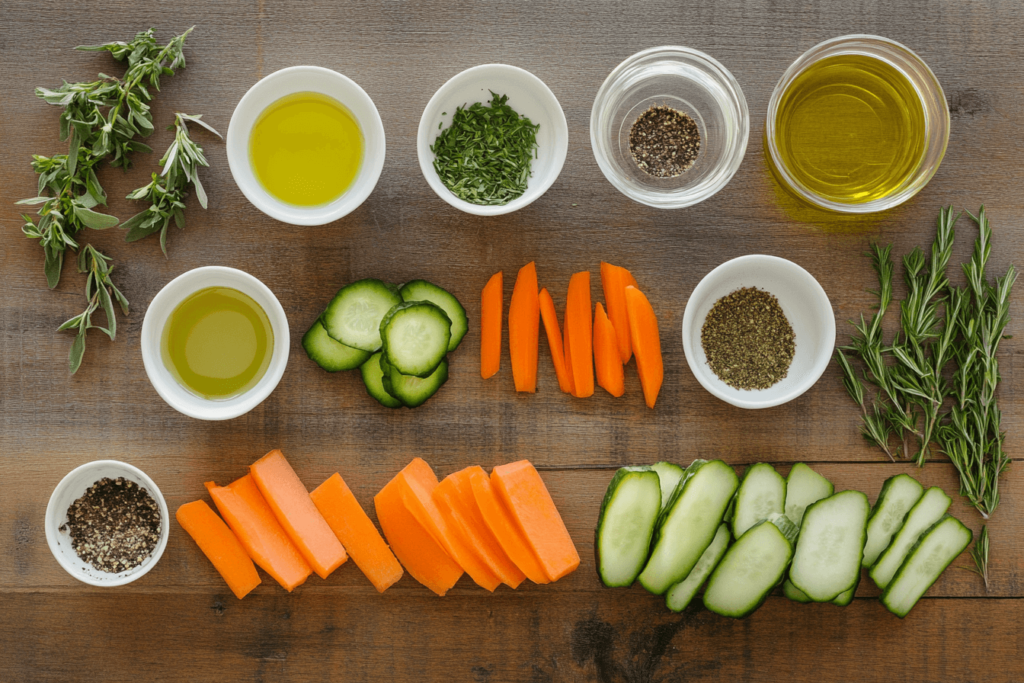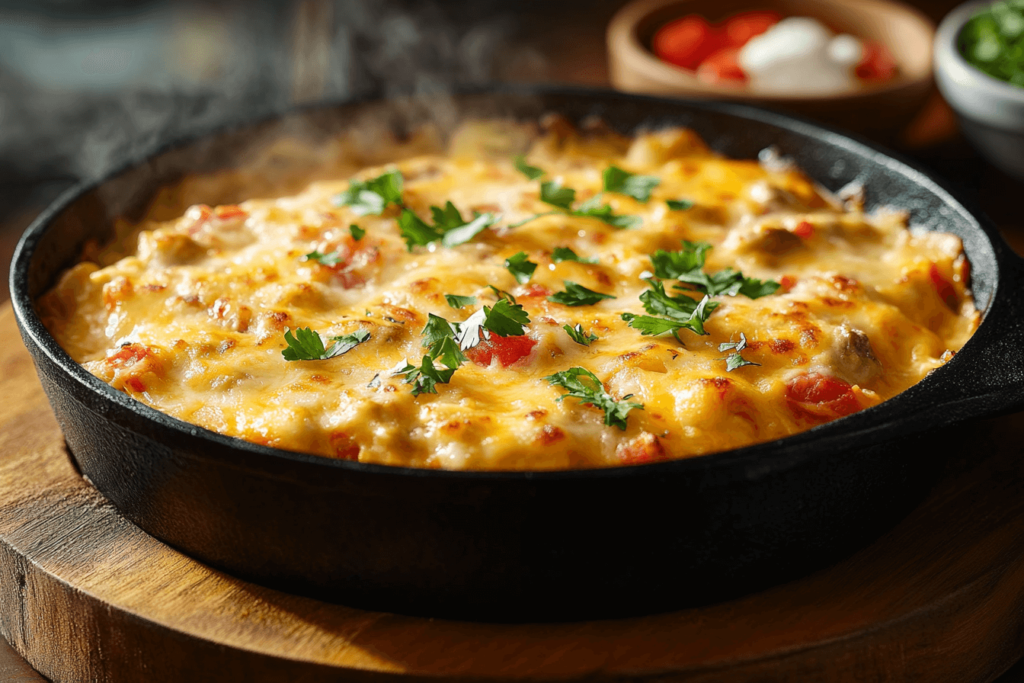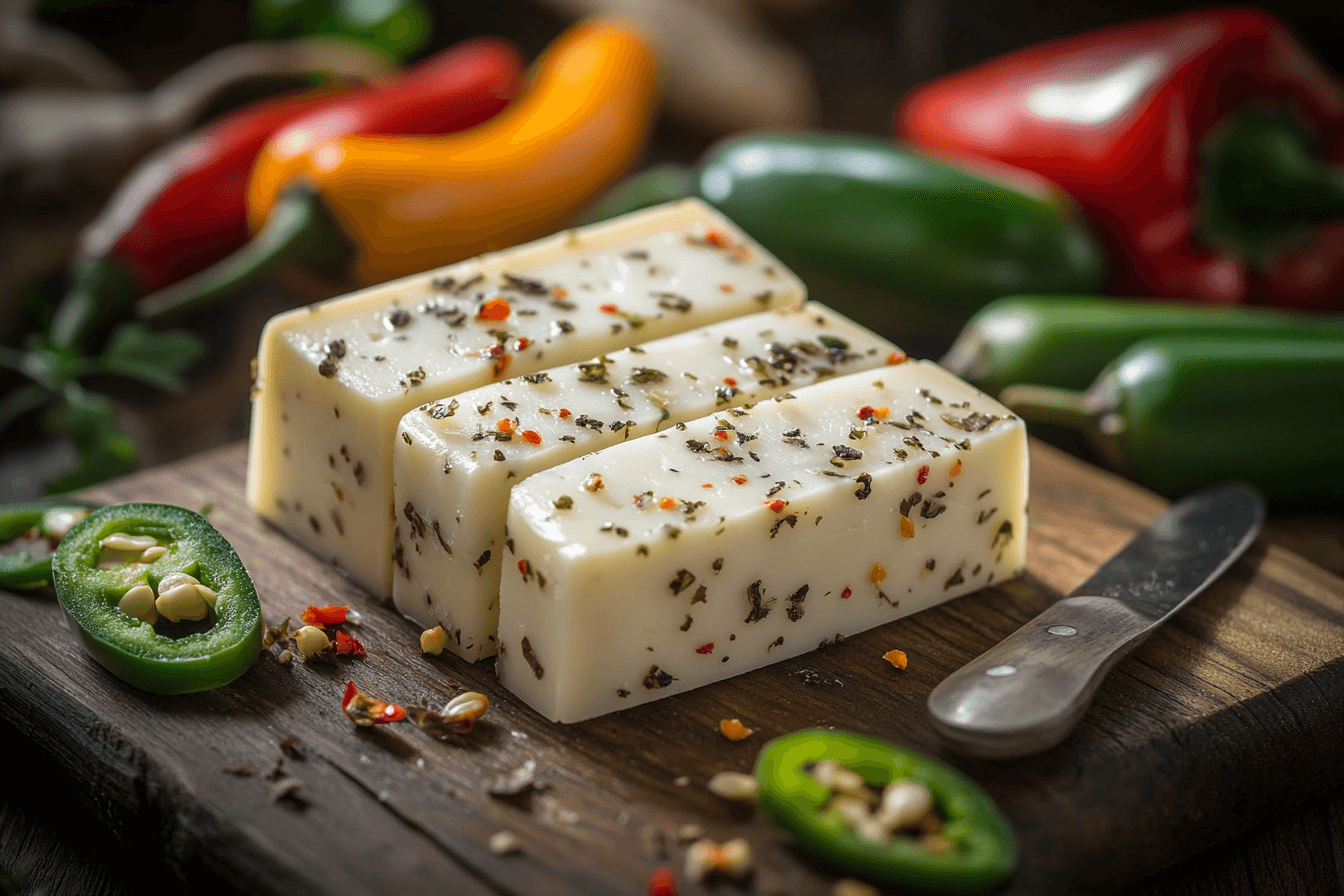Pepper Jack cheese is a fascinating combination of creaminess and spice, making it a popular choice for food lovers across the globe. But there’s so much more to this semi-soft cheese than meets the eye—or the taste buds! From its origins and production process to its nutritional profile and culinary uses, this article dives into every facet of Pepper Jack cheese. So, whether you’re a curious cook or a passionate cheese enthusiast, get ready to savor the story behind this fiery favorite.
Introduction to Pepper Jack Cheese
What is Pepper Jack Cheese?
At its core, Pepper Jack cheese is a variation of Monterey Jack cheese, infused with peppers, herbs, and spices. This gives it a unique kick that sets it apart from its milder counterparts. Its creamy texture, semi-soft consistency, and spicy undertones make it a versatile cheese, equally enjoyable melted on nachos or sliced onto a sandwich. What’s more, its flavor profile is complex yet approachable, catering to both spice enthusiasts and those new to bold flavors.
History and Origin
The roots of Pepper Jack cheese are as rich as its taste. Originating in the United States, Monterey Jack cheese was first crafted by Mexican Franciscan friars in the 1700s. Over time, the addition of peppers and spices gave birth to the Pepper Jack variant. This spicy innovation reflects a blend of American cheesemaking traditions and Mexican culinary influence. Today, it has become a staple in both households and gourmet kitchens, beloved for its zest and versatility.
Stay tuned as we delve deeper into the journey of Pepper Jack cheese, exploring how it’s made, its nutritional benefits, and the myriad of ways it can spice up your meals!
Production Process
Key Ingredients Used
The magic of Pepper Jack cheese begins with a handful of simple yet impactful ingredients. High-quality cow’s milk serves as the base, ensuring a creamy foundation. Jalapeños, or sometimes other spicy peppers, are added to infuse the cheese with its characteristic heat. Spices and herbs—like garlic, parsley, or crushed red pepper flakes—further enhance its bold flavor profile. Enzymes and cultures are also essential, helping the milk curdle and develop the tangy richness associated with cheeses.
Interestingly, the choice of peppers plays a significant role in the cheese’s spice level. Some cheesemakers opt for milder peppers, creating a more subdued kick, while others use fiery jalapeños to amp up the heat. This flexibility allows Pepper Jack cheese to cater to a range of taste preferences, making it an ideal addition to various recipes.
Cheesemaking Process
Producing Pepper Jack cheese involves a meticulous process that combines traditional cheesemaking techniques with modern flair. It all starts with pasteurizing the milk, ensuring it’s safe and consistent. Once pasteurized, cheesemakers introduce cultures and rennet, which cause the milk to coagulate into curds.
Here’s where the magic happens—those curds are carefully cut and heated to release whey, creating a firm yet pliable texture. At this stage, the diced jalapeños and spices are folded into the curds. This step not only flavors the cheese but also gives it its signature marbled appearance, where green and red flecks of peppers stand out against the creamy base.
The curds are then pressed into molds, shaping the cheese and removing excess moisture. After pressing, the cheese wheels are aged for a specific period, depending on the desired flavor intensity. The aging process enhances the creaminess while allowing the peppers and spices to meld beautifully with the cheese.
Finally, Pepper Jack cheese is ready to be sliced, shredded, or melted into your favorite dishes. What sets it apart from other cheeses is this careful integration of heat and creaminess, making it a delightful culinary adventure in every bite.
Flavor Profile and Characteristics
Taste and Texture
The first thing you’ll notice when you bite into Pepper Jack cheese is its smooth and creamy texture, a hallmark of Monterey Jack-based cheeses. But don’t let that fool you—soon after, the spicy kick from the peppers takes center stage, creating a delightful contrast. Its flavor is both tangy and buttery, with just the right amount of heat to keep your taste buds engaged. The spices provide a warm, lingering aftertaste, adding depth to its overall profile.
Spice Level Variations
Not all Pepper Jack cheese is created equal, especially when it comes to spice levels. Some brands craft milder versions, ideal for those who enjoy a subtle hint of heat. Others, however, lean into the fiery side, using extra peppers or bolder spices to appeal to heat lovers. Additionally, homemade or artisanal variations often offer unique twists, like smoked peppers or additional herbs, making each batch a new adventure.
Whether you enjoy it mild or bold, Pepper Jack cheese offers a flavor experience that pairs its creamy base with a tantalizing zing, ensuring it remains a crowd-pleaser.
Nutritional Information
Calorie Content and Macronutrients
Pepper Jack cheese is a nutrient-rich food, but like most cheeses, it’s also calorie-dense. A typical one-ounce serving contains approximately 100-110 calories, with around 7-9 grams of fat. This includes a healthy dose of saturated fats, which provide energy but should be consumed in moderation. The protein content is impressive, delivering about 6-7 grams per serving, making it a great option for muscle repair and maintenance.
Vitamins and Minerals
Beyond its creamy and spicy flavor, Pepper Jack cheese packs a punch of essential nutrients. It’s an excellent source of calcium, supporting strong bones and teeth. You’ll also find decent levels of phosphorus and magnesium, which aid in various bodily functions like energy production and bone health. Additionally, it provides vitamin B12 and riboflavin, both crucial for energy metabolism and maintaining nerve health.
Health Benefits and Concerns
In moderation, Pepper Jack cheese can fit beautifully into a balanced diet. Its high protein content and calcium levels make it a valuable addition to meals, especially for those looking to boost their nutrient intake. However, due to its fat and sodium content, it’s best enjoyed mindfully. People with lactose intolerance should also take note, though this cheese often contains lower lactose levels than others. Balancing its consumption with plenty of vegetables and whole grains is a surefire way to enjoy its benefits while keeping your diet on track.
Culinary Uses of Pepper Jack Cheese
In Mexican Cuisine
Pepper Jack cheese, without a doubt, is a natural fit for Mexican dishes, primarily due to its bold spice and creamy texture. Furthermore, it melts beautifully, which makes it an excellent choice for topping crowd-pleasers like quesadillas, enchiladas, and tacos. Additionally, when used in nachos, it becomes a superstar ingredient, delivering that gooey, melt-in-your-mouth texture along with a delightful kick of heat. Moreover, when mixed with salsa or guacamole, it transforms into an irresistibly creamy dip that can effortlessly elevate any appetizer spread. Therefore, whether you’re preparing traditional Mexican fare or experimenting with fusion dishes, Pepper Jack cheese is always a flavorful and reliable option.
In American Dishes
In American cuisine, Pepper Jack cheese shines in everything from hearty burgers to comforting casseroles. A slice of Pepper Jack on a burger adds a spicy twist to the classic. In mac and cheese, it blends smoothly with other cheeses, giving the dish a unique depth. It’s also a popular choice for grilled cheese sandwiches, turning an everyday meal into something extraordinary.
Versatility in Everyday Cooking
The versatility of Pepper Jack cheese doesn’t stop there. It’s a fantastic addition to breakfast dishes like omelets or scrambled eggs, providing both creaminess and spice to kick-start your day. It can be shredded over soups for added richness or used as a stuffing for chicken or bell peppers. Even in salads, small cubes of Pepper Jack can transform the dish with its spicy undertones.
Unique Pairings and Experimentation
For those who enjoy experimenting in the kitchen, Pepper Jack cheese pairs wonderfully with bold flavors like smoked meats or spicy chutneys. It’s also a great choice for fusion recipes, blending seamlessly into dishes that merge different culinary traditions. Whether melted, shredded, or sliced, Pepper Jack cheese consistently proves that it’s more than just an ingredient—it’s a game-changer in the kitchen.
Popular Recipes Featuring Pepper Jack Cheese
Pepper Jack Cheese Straws
These crispy, cheesy straws are the perfect snack for parties, game nights, or any occasion that calls for a little spice.
Ingredients:

- 1 ½ cups shredded Pepper Jack cheese
- 1 cup all-purpose flour
- ½ cup unsalted butter, chilled and cubed
- ½ teaspoon cayenne pepper
- ½ teaspoon smoked paprika
- ¼ teaspoon salt
- 2 tablespoons cold water
Instructions:
- Prepare the Dough: Combine the flour, cayenne pepper, smoked paprika, and salt in a food processor. Add the cubed butter and pulse until the mixture resembles coarse crumbs.
- Incorporate the Cheese: Add the shredded Pepper Jack cheese and pulse a few more times to mix. Slowly add the cold water, one tablespoon at a time, until the dough comes together.
- Chill the Dough: Wrap the dough in plastic wrap and refrigerate for 30 minutes.
- Shape the Straws: Roll out the dough to about ¼-inch thickness on a floured surface. Cut into thin strips (about 6 inches long).
- Bake: Preheat the oven to 375°F (190°C). Arrange the strips on a parchment-lined baking sheet and bake for 10-12 minutes or until golden and crisp. Let cool and serve.
Pepper Jack Chicken with Succotash
A hearty and flavorful dish, this recipe pairs juicy chicken with a creamy, spicy Pepper Jack cheese topping, balanced by the fresh flavors of succotash.
Ingredients:
- 4 boneless, skinless chicken breasts
- 1 cup shredded Pepper Jack cheese
- 1 cup sweet corn kernels
- 1 cup lima beans
- 1 red bell pepper, diced
- 2 tablespoons olive oil
- 1 teaspoon chili powder
- Salt and pepper to taste
Instructions:
- Prepare the Chicken: Season the chicken breasts with chili powder, salt, and pepper. Heat olive oil in a skillet over medium heat and cook the chicken for 6-7 minutes on each side or until fully cooked.
- Make the Succotash: In the same skillet, sauté the bell pepper for 2-3 minutes. Add the corn and lima beans, cooking until tender. Season with salt and pepper.
- Top with Cheese: Place the cooked chicken on a baking sheet, sprinkle with shredded Pepper Jack cheese, and broil for 2-3 minutes until the cheese melts.
- Serve: Arrange the succotash on a plate and top with the cheesy chicken. Garnish with fresh herbs, if desired.
Pairing Pepper Jack Cheese
Wine Pairings
Pepper Jack cheese pairs beautifully with a variety of wines. For a white wine, consider a slightly sweet Riesling or a buttery Chardonnay, both of which balance the cheese’s spiciness. If you prefer red, a light Pinot Noir or a fruity Zinfandel works wonders, complementing the heat without overpowering the creaminess.
Beer Pairings
When it comes to beer, Pepper Jack cheese shines alongside hoppy IPAs or crisp lagers. The bitterness of an IPA cuts through the cheese’s richness, while a lager provides a refreshing counterbalance to the spice. For a bold pairing, a smoky porter can amplify the cheese’s depth.
Other Pairings
Beyond drinks, Pepper Jack cheese pairs delightfully with fresh fruits like grapes, pears, or apples. For a more indulgent snack, try it with spicy charcuterie, honey-drizzled crackers, or a tangy tomato jam. These pairings enhance the cheese’s dynamic profile, making every bite a memorable experience.
Storage and Shelf Life
Proper Storage Techniques
Storing Pepper Jack cheese correctly is essential to preserve its creamy texture and spicy flavor. The key is to keep it cool and protected from air exposure. Ideally, wrap the cheese tightly in wax paper or parchment paper first, as this allows it to breathe while preventing moisture loss. Then, place the wrapped cheese in an airtight container or a resealable plastic bag for extra protection. Store it in the refrigerator’s crisper drawer or the cheese compartment, where the temperature and humidity levels are more consistent.
If you’ve opened pre-packaged Pepper Jack cheese, reseal it as tightly as possible or transfer it to a proper storage container. For shredded varieties, ensure the bag is well-sealed to prevent drying out.
Shelf Life Expectations
When stored properly, a block of Pepper Jack cheese can last up to 3-4 weeks in the refrigerator. Shredded or pre-sliced versions typically have a shorter shelf life, around 1-2 weeks, due to increased exposure to air and potential moisture loss. Always check the expiration date on store-bought packages as a guideline.
If you need to store Pepper Jack cheese for longer, freezing is an option. However, freezing can alter the texture, making it more crumbly when thawed. To freeze, cut the cheese into smaller portions, wrap each portion tightly in plastic wrap, and place it in a freezer-safe bag. Frozen cheese is best used for cooking and can last up to 6 months.
Signs of Spoilage
To know if your Pepper Jack cheese has gone bad, watch for these signs:
- Mold Growth: Unusual green, blue, or fuzzy spots.
- Off Smell: A sour, ammonia-like odor.
- Texture Changes: Excessive dryness, sliminess, or an unusually hard texture.
If any of these are present, it’s time to toss the cheese. Proper storage not only extends its shelf life but also ensures every slice or shred of Pepper Jack cheese remains delicious and safe to eat.
Variations and Related Cheeses
Monterey Jack: The Base of Pepper Jack Cheese
Pepper Jack cheese owes its existence to Monterey Jack, a mild and creamy cheese that originated in California. Monterey Jack is known for its semi-soft texture and buttery taste, making it the perfect canvas for adding bold flavors like peppers and spices. Unlike its spicy sibling, Monterey Jack offers a neutral profile that pairs well with a wide range of dishes, from sandwiches to pasta.
Other Spicy Cheeses
Chipotle-infused cheeses are another delicious choice, delivering a smoky flavor that complements the heat. The smoky undertones of chipotle cheese make it a favorite for barbecue dishes and Tex-Mex cuisine. Ghost pepper cheese, on the other hand, is for the truly adventurous, offering an intense level of heat that can challenge even the most seasoned spice lovers.
Flavor and Texture Comparisons
While Pepper Jack cheese balances creaminess with a manageable spice level, other variations tend to lean more heavily on either the heat or texture. For example:
- Habanero Cheese: Creamy but much hotter, ideal for bold palates.
- Chipotle Cheese: Smoky and slightly drier, making it excellent for melting.
- Ghost Pepper Cheese: Extremely spicy but less versatile due to its intense heat.
Each spicy cheese offers its unique twist, but Pepper Jack remains a favorite for its approachable heat and versatility. It’s this balance that ensures Pepper Jack cheese continues to shine on menus and in kitchens worldwide.

Health Considerations
Lactose Content
For those with lactose sensitivity, Pepper Jack cheese may still be an option. Like many aged cheeses, its lactose content is relatively low because most of the lactose is removed during the cheesemaking process. However, tolerance levels vary, so it’s wise to test small portions first to gauge your reaction.
Tyramine Levels and Headaches
Tyramine, a naturally occurring compound in aged cheeses, can be a concern for individuals prone to migraines. Pepper Jack cheese contains moderate levels of tyramine, which may trigger headaches in some people. If you’re sensitive, consuming it in moderation and pairing it with other low-tyramine foods can help mitigate potential side effects.
Sodium and Fat Considerations
As with most cheeses, Pepper Jack is high in sodium and saturated fat, which can be a concern for those with heart or blood pressure issues. A single ounce contains around 200 milligrams of sodium and 7-9 grams of fat. While these nutrients are part of what makes the cheese flavorful and satisfying, overconsumption should be avoided.
Nutritional Benefits
Despite these considerations, Pepper Jack cheese offers several health benefits. It’s a rich source of calcium, vital for strong bones and teeth, and it provides high-quality protein for muscle repair and energy. Its inclusion of capsaicin (from peppers) may also offer slight metabolism-boosting properties, adding a spicy health perk to this flavorful cheese.
Balancing portions and pairing it with nutrient-dense foods like fresh vegetables or whole grains ensures that Pepper Jack cheese remains a delicious and nutritious addition to your diet.
Nutritional Content (Per 100g)
Below is a breakdown of the typical nutritional composition of Pepper Jack cheese per 100 grams:
| Nutrient | Amount (per 100g) |
|---|---|
| Calories | 357 kcal |
| Protein | 25 g |
| Total Fat | 29 g |
| Saturated Fat | 19 g |
| Cholesterol | 85 mg |
| Sodium | 721 mg |
| Calcium | 721 mg |
| Phosphorus | 512 mg |
| Vitamin B12 | 1.5 mcg |
How to Make Pepper Jack Cheese at Home
Making Pepper Jack cheese at home is a rewarding process that allows you to control its spice level and flavor. While it requires some patience and basic equipment, the results are well worth the effort.
Equipment Needed
- Large stainless-steel pot
- Thermometer (preferably digital)
- Cheesecloth
- Cheese mold
- Long knife for cutting curds
- Slotted spoon
- Colander
- Cheese press
Ingredients
- 1 gallon of whole milk (preferably not ultra-pasteurized)
- ¼ teaspoon mesophilic starter culture
- ½ tablet rennet (dissolved in ¼ cup cool, non-chlorinated water)
- 1 tablespoon salt
- ½ cup finely diced jalapeños (adjust based on desired spice level)
Step-by-Step Instructions
- Heat the Milk: Pour the milk into a large pot and heat it to 90°F (32°C) over low heat, stirring occasionally to prevent scorching.
- Add the Culture: Sprinkle the mesophilic starter culture over the milk. Let it rehydrate for 2 minutes, then stir gently to mix. Cover the pot and let it sit for 30 minutes.
- Add Rennet: Stir in the dissolved rennet using an up-and-down motion. Allow the milk to set for 30-45 minutes until it forms a firm curd.
- Cut the Curds: Use a long knife to cut the curds into ½-inch cubes. Let them rest for 5 minutes.
- Cook the Curds: Gradually heat the curds to 105°F (40°C) over 30 minutes, stirring gently. Once the target temperature is reached, maintain it for an additional 30 minutes.
- Drain the Whey: Pour the curds into a cheesecloth-lined colander to drain. Add the diced jalapeños and salt, mixing gently to distribute evenly.
- Press the Cheese: Transfer the curds into a cheese mold and press them under moderate pressure for 12 hours.
- Age the Cheese: Remove the cheese from the mold and wrap it in cheesecloth. Age it in a cool, humid environment (around 55°F or 13°C) for 2-4 weeks, flipping it every few days.
Once aged, enjoy your homemade Pepper Jack cheese in all your favorite recipes!
Frequently Asked Questions (FAQs)
Does cheesecake crust need to be pre-baked?
Yes, pre-baking a cheesecake crust ensures it becomes firm and crispy rather than soggy. It also creates a sturdy base that holds up well against the creamy filling, preventing it from crumbling when sliced.
What happens if you don’t pre-bake graham cracker crust?
If you skip pre-baking, the crust may remain crumbly and soft. This could lead to a less stable base for the cheesecake, especially if the filling is dense or moist. Pre-baking helps bind the crust ingredients, improving texture and structure.
Should you bake the crust of a no-bake cheesecake?
For a no-bake cheesecake, baking the crust is optional but recommended. It provides extra crispness and ensures the crust holds together better, especially when cutting slices. If you prefer a softer texture, you can skip this step and chill the crust instead.
Do you have to pre-bake a ready-made graham cracker crust?
No, a ready-made graham cracker crust is designed to be used straight from the package. However, baking it for a few minutes can enhance its flavor and texture, creating a slightly toasty and firmer base for your cheesecake.
Conclusion
Pepper Jack cheese stands out as a unique and versatile addition to the world of cheese. From its creamy texture and spicy kick to its endless culinary applications, it has secured a special place in both home kitchens and gourmet recipes. Whether you’re savoring it melted in a quesadilla, incorporating it into a bold new dish, or even making it at home, this cheese consistently delivers flavor and excitement.
Ultimately, Pepper Jack cheese represents a delightful fusion of tradition and creativity, making it a truly versatile and beloved cheese. Moreover, its ability to cater to a wide range of palates—from mild spice enthusiasts to bold heat lovers—underscores its widespread and enduring appeal. In addition, for cheese aficionados who savor the classics or culinary explorers eager to experiment, Pepper Jack cheese consistently delivers a spicy delight that never disappoints. Consequently, it remains a staple in kitchens and recipes around the world, celebrated for its unique flavor and creamy texture.

